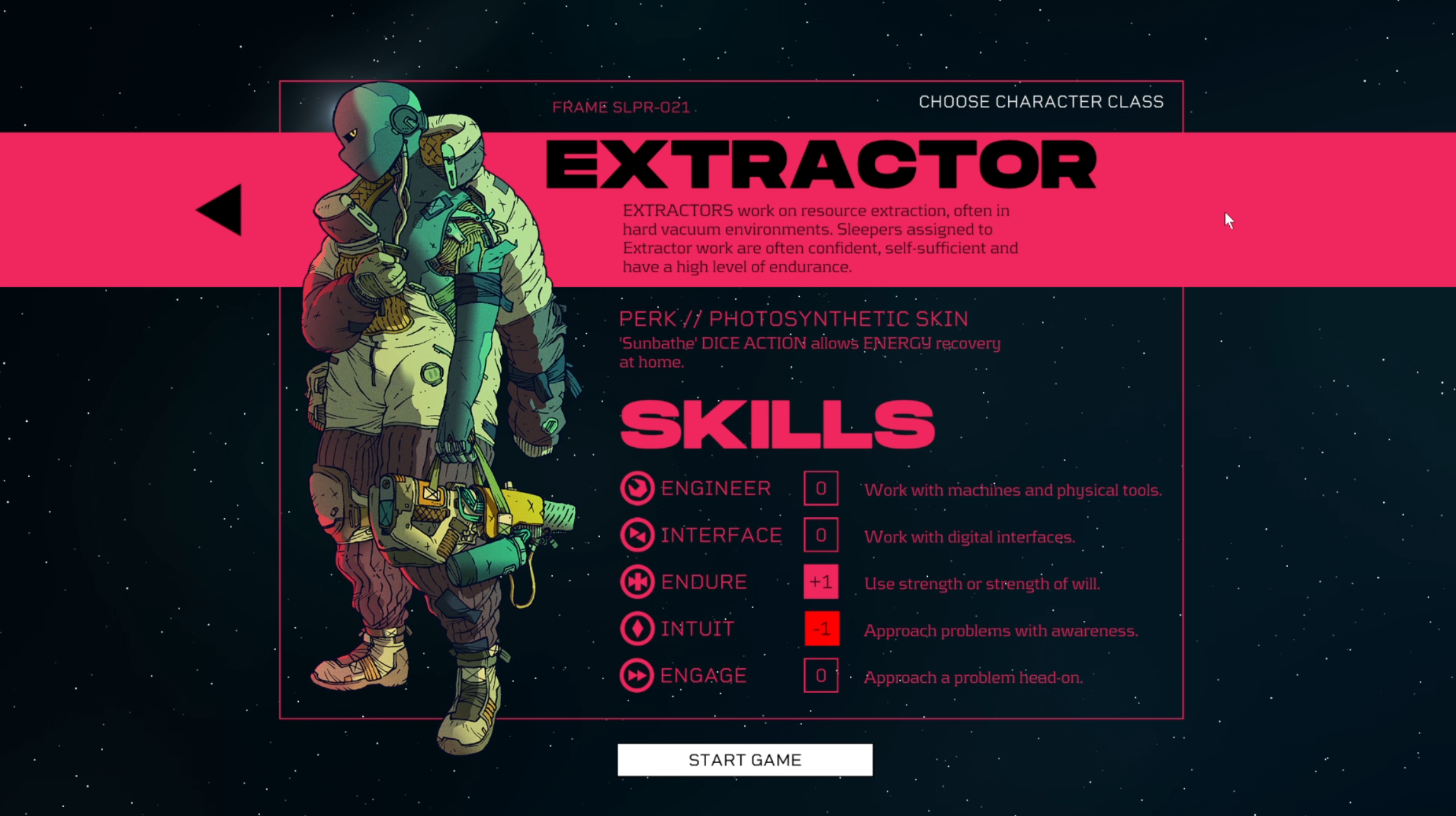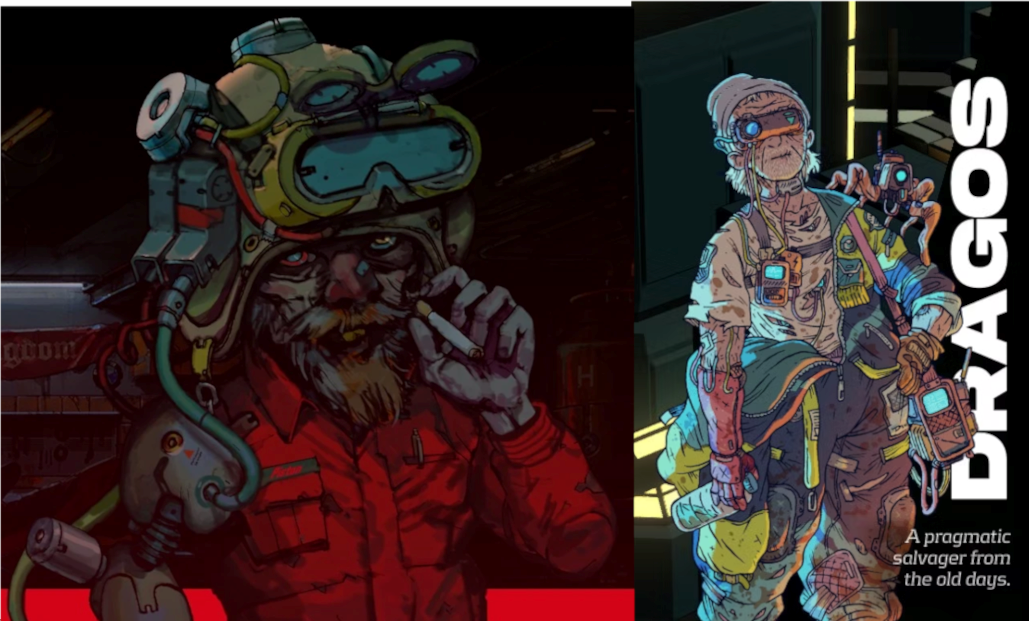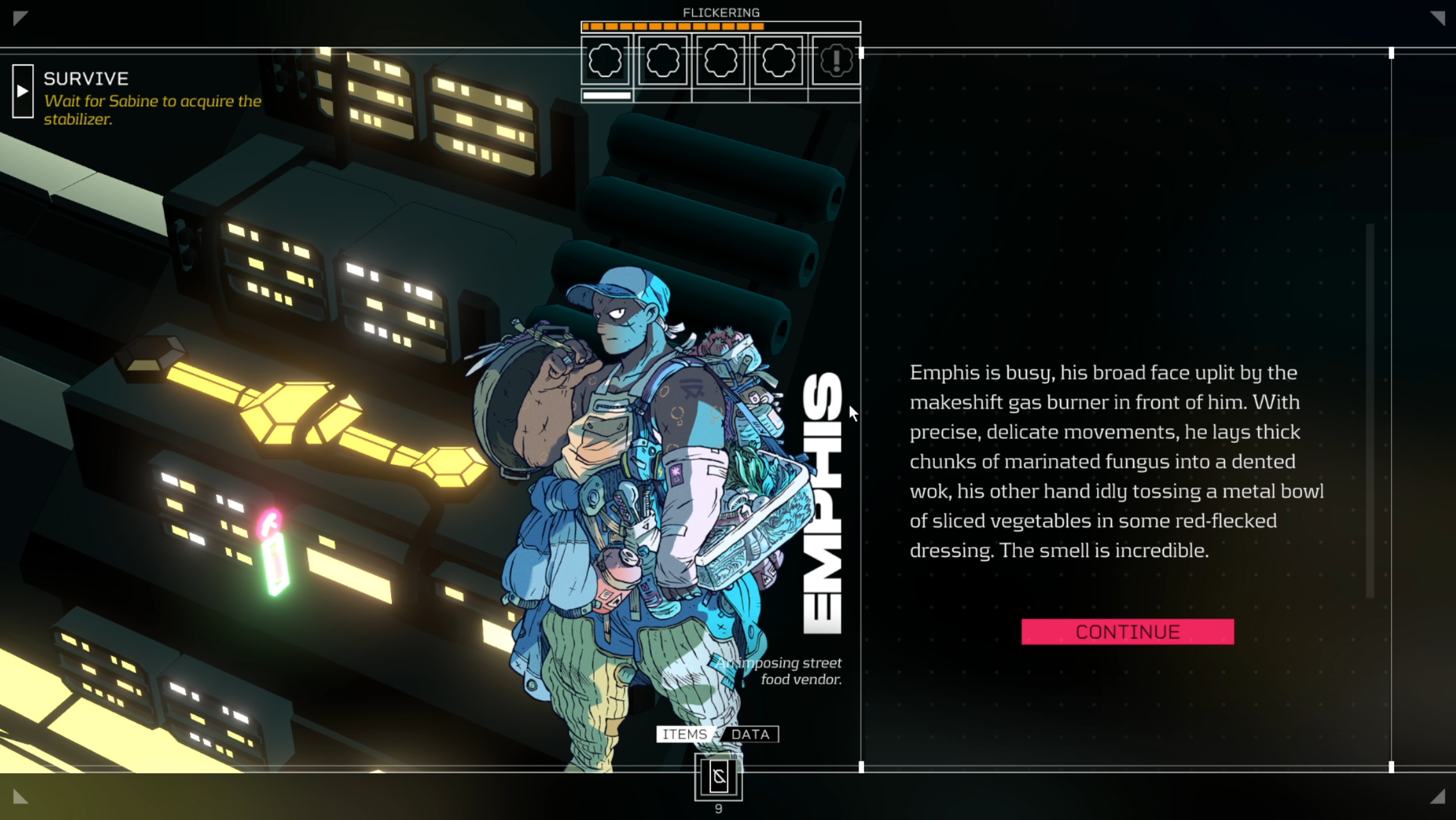Citizen Sleeper review
2023-07-12 by Mike Alexander
Reviewed on
PCPlatforms
Xbox One, PlayStation 4, Mac, PlayStation 5, PC (Microsoft Windows), Nintendo Switch, Xbox Series X|S
Developer
Jump Over the AgePublisher
Fellow Traveller
Intelligent Design
The concept of a futuristic, ultra-capitalist hellscape bathed in the subtle neon glow from hazy reflections in rain puddles on the pavement is nothing new.
Cyberpunk 2077 is the most recent and the most prominent example, but this concept has basically been done to death since Ridley Scott’s Blade Runner hit the scene in the 80s. I’m personally a fan of these narratives and visuals (Blade Runner has been my favorite movie since I saw it at a young age), so I tend to greedily consume any content that has even a whiff of this kind of sci-fi energy.
Except for Citizen Sleeper.
When the game was originally released in 2022, I wrote it off as a RUINER ripoff based solely on what I had seen of its presentation. I’ve ignored it since then due to my immense love of RUINER (a game any sci-fi fan should have) and moved on to making a name for myself in Night City.
Now, Citizen Sleeper has been dropped on my desk for review, and I couldn’t be more remorseful for not giving this game the props it deserves upon its release. Find out what makes Citizen Sleeper not just special, but one of the most unique and enthralling sci-fi games I’ve ever played in this review.
Citizen Sleeper is a narrative-focused RPG set in a sci-fi universe that finds a way to be comfortably familiar while also carving out space for itself to stand apart and tell new stories with interesting characters. It was created by Gareth Damian Martin, the singular developer of the indie game studio Jump Over the Age, and published by Fellow Traveller Games, the same company responsible for publishing indie hits like Paradise Killer, Neo Cab, and Beacon Pines.
The only other credit Jump Over the Age has is In Other Waters, an adventure game from 2020 that garnered high praise thanks to its concept and creative, minimalistic gameplay and presentation. Now having spent somewhere in the neighborhood of 10 hours with Citizen Sleeper, I can confidently say that Gareth Damian Martin is two for two in creating fascinating worlds that are explored through unconventional gameplay.

I’ve Seen Things You People Wouldn’t Believe
At the top of this review, I mentioned that I wrote off Citizen Sleeper because I deemed its UI design to be too similar to RUINER, a completely different game from a completely different developer. Is that shallow? Perhaps, but just take a second to compare the two. Primarily red and black interfaces, sharp, bold fonts, and 2D character portraits that have a distinct, high-quality hand-drawn aesthetic. Also, try convincing me that Mechanix from RUINER and Dragos from Citizen Sleeper don’t have the same energy.
You can’t.
There’s undoubtedly some inspiration going on, and even the creators of RUINER, Reikon Games, have taken notice in a fun way.

Once I was able to break through that barrier, I was wholly impressed by what Citizen Sleeper brings to the table in terms of presentation.
The art and character designs stray into a Studio Trigger style of aged anime-ness (created by the incredible artist Guillaume Singelin) that I really, really enjoy. And, considering it’s a game that’s all interface and menus, everything is very simple to navigate and not overwhelming at all. I was more than a little concerned that would be the case after the first twenty or so minutes of gameplay, but the game’s design is sound and intuitive.
Even so, as fantastic as Citizen Sleeper’s presentation is, its writing is what sucked me in.
Citizen Sleeper is not at all like RUINER, an isometric action game. Instead, I would describe it more like a tabletop RPG combined with a visual novel. I’m all for visual novels, but the dice rolling, chance, and probability of tabletop RPGs don’t typically appeal to my sensibilities, which results in me falling off of them pretty quickly.
But something happened when I started playing Citizen Sleeper. I was presented with text box after text box, and instead of my eyes glazing over, they were fully engaged and hungrily scanning the screen for more information. And as I weighed up probabilities and contemplated what moves I would make next, I only became more enamored with Citizen Sleeper.
In Citizen Sleeper, you see the world through the eyes of a human who donated their body to a megacorporation called Essen-Arp and had their mind digitally transferred into a synthetic body. This Synthetic being (basically a Replicant) is referred to as a Sleeper by everyone it encounters. And as this player character rattles off fascinating inner monologues and grapples with whether its memories are real or implanted, there is much to do.

Made to Be the Best, but Not to Last
As a Sleeper, you’ve escaped your indentured servitude by hopping on an escape pod to get off-world and try to carve out a life for yourself on a distant space colony called the Eye. After being rescued from your cramped pod by Dragos, the delightful chap seen above, you begin your new life in this strange new place.
The eye is full of danger, interesting characters, and impasses that require careful decision-making. Some of those decisions can change how the story plays out and even how it ends! But constantly thinking about the ramifications of your decisions isn’t something you’re likely to be doing in Citizen Sleeper like you would in a TellTale game.
The stories of individuals, people who feel real and grounded, trying to make it in this place that exists beyond the scope of normal life always feel genuine and authentic, and so does the evolution of each of these relationships over the course of the game.
The story and writing of Citizen Sleeper is definitely the star of the show for me, and part of what makes it work so well is how plot points are blended into its gameplay.
You see, Essen-Arp has built failsafes into their synthetic workers. Each one requires a special stabilizer that only the corporation makes and provides for them. So if they should escape, their body will deteriorate and fail at an accelerated rate.
However, where there’s a will, there’s a way, and your primary day-to-day goal in Citizen Sleeper is just to stay alive by working enough to buy food and source enough stabilizers to keep you going. Finding the best ways to make a quick buck comes naturally as you play the game, and you meet characters that can help you with stabilizers, but now we have to talk about dice rolls.
Every time your Sleeper wakes up, you will be randomly given a set of numbered tiles that you use to complete actions around the Eye. The higher the number on the tile, the more guaranteed that action will be successful, but the longer you go without stabilizer, the fewer tiles you get. Pretty obvious stuff, and I didn’t think I would be a fan of this when the mechanic was first revealed to me, but it just works. When you roll a set of low-numbered tiles, you know you’re in for a rough day and that only pushes forward the narrative and role-playing experience. I actually found some of those bad days to be more interesting and exciting because they are the most unpredictable, and Citizen Sleeper revels in its twists and turns.
All told, I loved Citizen Sleeper. I went from turning my nose up at it, to barely having a single bad thing to say about it other than this: I wish it was longer. If you progress at a steady pace, you could blast through the game in five to six hours, which is far less than I would care to spend in this world. I could frame this as the game being respectful of your time and not overstaying its welcome, but I have to criticize something, right?
By the time I was given Citizen Sleeper to evaluate, Citizen Sleeper 2: Starward Vector had already been announced, so at least I have that to look forward to.
If you’ve managed to miss Citizen Sleeper up to this point in time, let this review be your sign to pick it up and play it now, preferably before the sequel is out. It’s available now on PlayStation, Xbox, Nintendo Switch, and PC